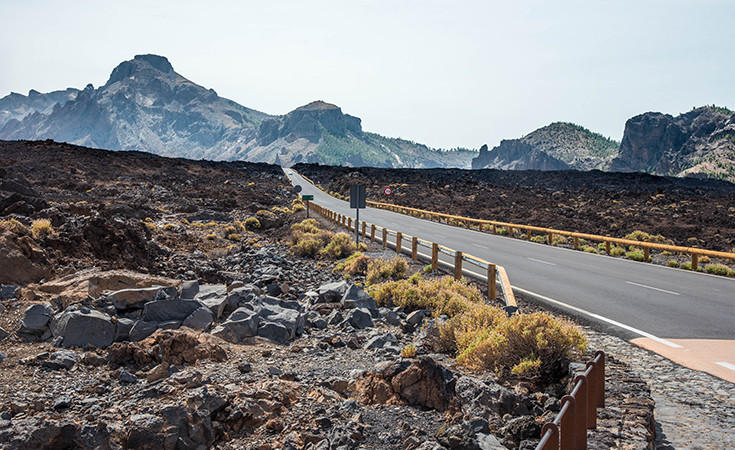
Teide National Park is the largest park in the Canary Islands and it should be at the top of your visit list once you come to Tenerife. The park is situated at the center of the island of Tenerife and is the largest and oldest of the four national parks of the Canary Islands. With a surface area of around 190km2, the Teide mountain reaches a height of 3718m above sea level at its highest point, making it the tallest mountain in Spain.
The Teide National Park is one of the world’s biggest marvels, with an advantage of being easily accessible and relatively close to all European countries. The entire park is a unique geological wonder, which hosts volcanos, craters, holes and a diversity of materials which create an impressive array of shapes and colors. You will be surprised by the diversity of Las Cañadas del Teide, stunned by the huge rivers of petrified lava, and impressed by the eroded stones and colossal dimensions of this mineral chaos. On the other hand, the Spring and the beautiful and truly unique flowers that grow in the area will take your breath away.
The Teide mountain is the most prominent part of the Teide National Park. This marvelous volcanic product has a thousand faces, depending on where you stand and what time of year it is. The changing appearance is an infinite source of enjoyment for all onlookers. At the foot of the mountain, a large number of volcanic stones formed so recently that they haven’t yet had the chance to be eroded away.
The wall that surrounds the Teide National Park spreads over an area of 25km, reaching heights of 600 meters in an area known as Guajara, where it is at its highest. This natural incision affects the long-gone volcanic product, which has seized to exist some 198 thousand years ago, when the then-shape of Las Cañadas formed a giant landslide, which uncovered some of its roots in the Los Roques area, uncovering channels, volcanic entrances once feed by past eruptions.
In the subsequently formed stone incision, you will be able to witness three million years of geological history, all stacked in repetitive cycles of eruptions and landslides that had formed the Teide mountain and national park.
The Teide was declared a national park in 1954, and in 1989, it was awarded with the status of the highest category of protected areas of Europe. In 2007, it was declared a UNESCO World Heritage Site.
The top of the Teide mountain can be reached on foot, but make sure you register before you start your ascent. Keep in mind that the trip to the top of the mountain takes several hours to complete.
You can also reach the top of the mountain by aerial lift, which requires no registration beforehand. The price of an aerial lift ride is €13.5.